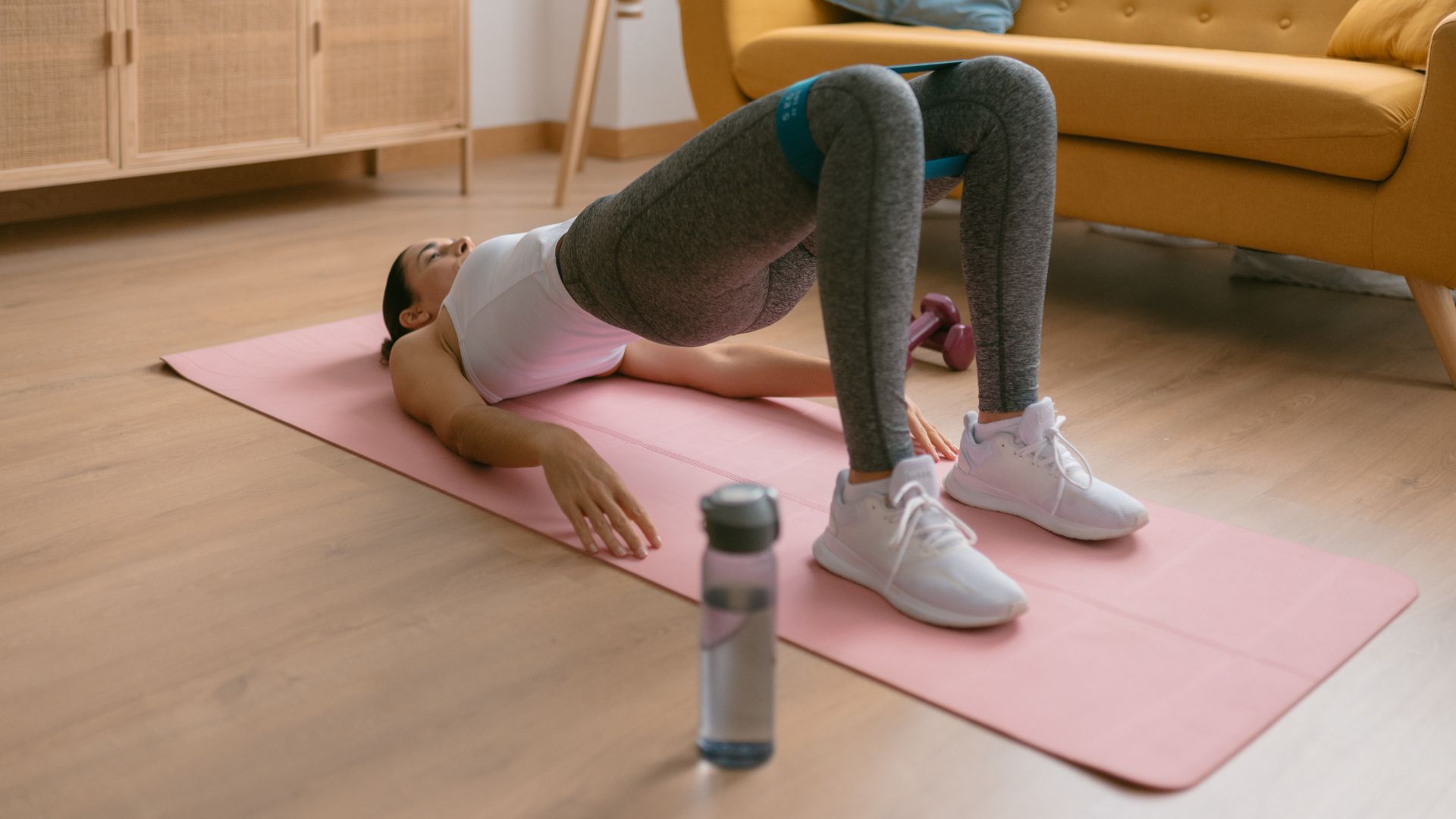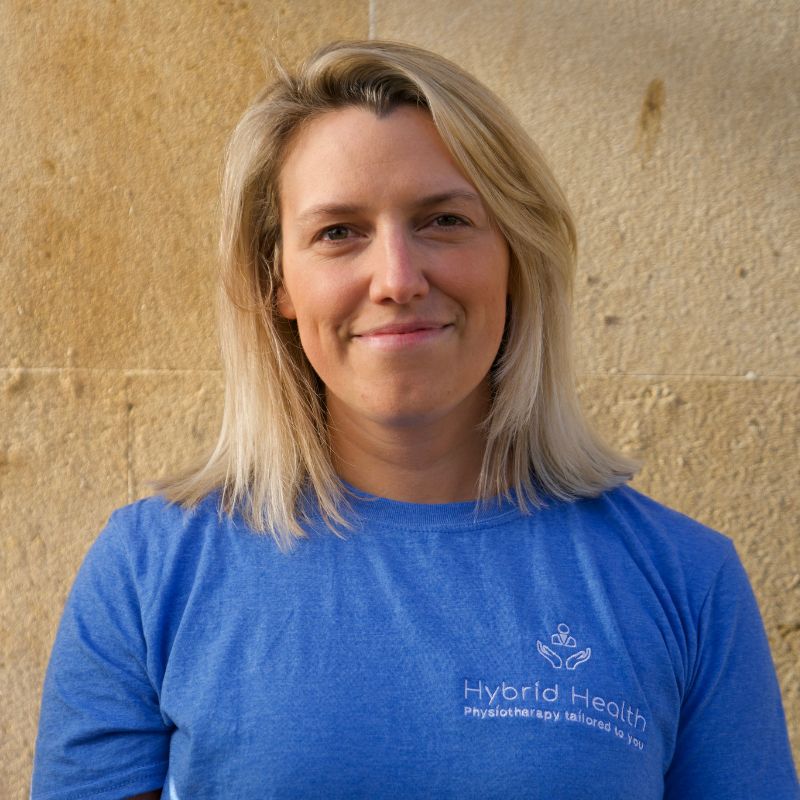These 5 knee exercises are all you need to boost joint strength and mobility - and there's not a squat in sight
It all starts with the knees. Whether you're a runner or just want to make sure you can move healthily into old age, keeping these joints strong is the answer


When we think of knee exercises, we often think of movements that put a lot of pressure on the knee. Higher intensity equals stronger, right? Not when it comes to boosting joint strength.
The best routine for stronger knees, better stability, and improved mobility includes plenty of quadricep exercises and glute exercises, says Vicky Lewis-Baldy, a chartered physiotherapist, level 4 personal trainer, and founder of Hybrid Health.
"Most knee pain cases involve poor posterior chain activation, especially glutes," she says, so improving strength in this area will naturally alleviate pressure from the knee and get you back to moving comfortably. These are the exercises Vicky recommends.
Why is it important to look after your knees?
We use our knees every day - whether it's climbing the stairs and moving around the house or dedicated exercise - so it's no surprise they are prone to wear and tear.
Knee issues are also one of the most common problems physiotherapists deal with, and around 25% of the population experiences knee pain, according to the National Institutes of Health.
"Whether it’s linked to running, strength training, or everyday wear and tear, maintaining strong, stable knees is essential not just for sport, but for preserving mobility, independence, and confidence as we age," says Vicky.
What's more, this joint is one of the major body parts impacted by menopause. "The drop in oestrogen during menopause impacts the health of connective tissue, cartilage, and muscles, all of which support knee function," explains Vicky.
Sign up to our free daily email for the latest royal and entertainment news, interesting opinion, expert advice on styling and beauty trends, and no-nonsense guides to the health and wellness questions you want answered.
"Lower hormone levels can increase joint stiffness, reduce muscle mass, and affect balance, making knees more vulnerable to injury and degenerative changes. It’s one of the most overlooked yet significant factors in midlife joint health," she says.
That's why knee exercises are an important part of any workout routine.
Knee exercises to try
1. Glute bridges with heel drive
- Lie on your back with knees bent, toes lifted, and heels dug into the floor.
- Squeeze your glutes and lift your hips off the floor.
- Drive your heels into the ground, aiming for a straight line from shoulders to knees.
- Lower back down with control.
Expert tip: "Focus on keeping ribs down and don’t over-arch your back," says Vicky. "To advance the exercise, take your heels further away from you. This lengthens the lever (your leg)."
2. Wall Sits with ball squeeze
- Stand with your back against a wall, then slide down into a seated position with your thighs parallel to the ground.
- Place a ball between your legs and squeeze it.
- Hold for 20 to 45 seconds to start, remembering to squeeze the ball throughout.
Expert tip: "Keep your knees stacked over ankles, not pushed forward," she says.
3. Step-ups
- Step up onto a low, stable platform or stair using one leg, driving through the heel.
- Step back down slowly.
- Alternate or repeat on one leg.
Expert tip: "Ensure your knee tracks in line with your second toe and doesn’t cave inward," she says.
If you struggle with knee niggles in daily life, this is a good exercise to prioritise as it's a functional movement, meaning it mirrors everyday activities. "The step-up exercise improves functional strength and eccentric control, both essential for stair climbing, walking, and real-life tasks."
4. Hip abduction + Extension with Resistance Band
- Lie on your side with your legs straight & hips rolled forward.
- Place a resistance band above your ankles.
- Keeping feet together, lift the top leg up and slightly back without rolling your pelvis back.
Expert tip: "Go slow and avoid letting the pelvis rock backwards," says Vicky.
For pain on the inside of the knee, this is a great exercise. "It activates the glute medius, a key stabiliser of the hip and knee, especially for women who experience medial knee stress," she adds.
5. Heel drops
- Stand on a small step.
- Slowly lower one heel toward the floor by bending the standing leg.
- Return to start.
Expert tip: "Keep the knee over the foot and avoid dropping down quickly," says Vicky. As with all these exercises, it's important to go slow and prioritise getting the movement right, rather than doing it quickly.

Vicky is a fully Chartered Physiotherapist with over 20 years of experience in health and wellness, and the owner of Hybrid Health, a specialist physiotherapy clinic based on Milsom Street in Bath. She is registered with both the Chartered Society of Physiotherapy (CSP) and the Health and Care Professions Council (HCPC). She has worked extensively across NHS, private practice, and elite sports environments.
Her clinical expertise spans musculoskeletal rehabilitation, sports injuries, and chronic pain, with a strong focus on proactive, exercise-based physiotherapy.
A former rehabilitation gym owner, Level 5 Sports Massage Therapist, and Level 4 Advanced Personal Trainer, Vicky is passionate about helping women stay active through all stages of life. When she's not in clinic, you'll likely find her on the hockey pitch, in the pool, or training in the gym.
What causes knee issues?
- Relying on high-intensity cardio exercise: This includes running and HIIT exercises involving jumping, or even walking too much. "Without the right joint support, this can lead to overload," says Vicky.
- Weak glutes and hips: When we have weak glutes or hips, they can't stabilise the quadriceps (thighs) very well, which puts pressure on the knees to do the work instead.
- Poor squat or lunge form: Squats and walking lunges can be among the best lower-body exercises, but you have to do them right. Otherwise, it can "lead to excessive pressure through the kneecap," says Vicky.
- Not doing mobility work: "Stiffness elsewhere (like the ankles) can cause the knees to overcompensate," she says. It's why mobility exercises are an essential part of any strength training routine.
Can walking improve knee strength?
Yes, walking can help boost strength in the quadriceps, glutes, calves, core, and hips, which all help alleviate pressure on the knees and make them feel stronger.
Research also shows that walking regularly - whether that's 30 minutes of walking every day or exploring the benefits of hiking over a weekend - can help increase range of motion and circulate synovial fluid. This is the fluid that lubricates and nourishes the joints.
Tips for avoiding knee pain
- Prioritise weight training: "Train smarter, not harder," says the physio. "Include strength and control-based exercises rather than solely relying on cardio." And of course, there should be plenty of lower-body exercises focusing on the quadriceps, glutes, and hips.
- Focus on quality over quantity: The priority should be "good alignment and control" in every repetition, rather than the weight lifted or the number of repetitions.
- Balance your training: Too much of anything is never good. "Pair strength work with mobility and recovery," says Vicky. This also means ensuring you have enough rest days between workouts.
- Catch the warning signs early: "Clients often wait until the pain becomes unmanageable before seeking help," she says. "Don't ignore stiffness, swelling, or discomfort."

Grace Walsh is woman&home's Health Channel Editor, working across the areas of fitness, nutrition, sleep, mental health, relationships, and sex. She is also a qualified fitness instructor. In 2025, she will be taking on her third marathon in Brighton, completing her first ultra marathon, and qualifying as a certified personal trainer and nutrition coach.
A digital journalist with over seven years experience as a writer and editor for UK publications, Grace has covered (almost) everything in the world of health and wellbeing with bylines in Cosmopolitan, Red, The i Paper, GoodtoKnow, and more.
You must confirm your public display name before commenting
Please logout and then login again, you will then be prompted to enter your display name.